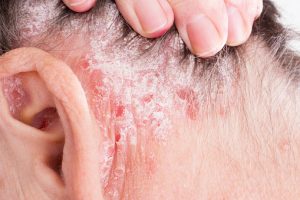
Published in the American Journal of Clinical Dermatology, Swedish researchers studied 5,438 men and women with psoriasis who were native to Sweden and learned that women had a statistically lower incidence of severe psoriasis than men. This is surprising, considering that autoimmune disorders tend to favor females more than males. Other autoimmune disorders such as systemic lupus erythematosus (SLE), multiple sclerosis (MS), and rheumatoid arthritis (RA) are all more prevalent in women than they are in men.
“Our results tell us that the well-established gender differences in the utilization of psoriasis care can at least partially be explained by a higher prevalence of more severe disease in men,” says Marcus Schmitt-Egenolf, who is a researcher at the Department of Public Health and Clinical Medicine at Umeå University and senior author of the study.
This conclusion was made using PsoReg: a detailed disease measurement data resource of all patients measured with the standard Psoriasis Area Severity Index (PASI). The analysis found that women had significantly (P<0.001) lower median PASI values when compared to men (5.4 for women/7.3 for men). The findings of severe psoriasis in men were consistent across all ages and in all areas of the body, with the exception of the head.
The researchers stress that no differences between men and women in the use of medications before enrolment in the PsoReg register explained the difference in severe psoriasis cases observed. This new finding of increased prevalence in men has the possibility to motivate sex-specific treatments for the management of severe psoriasis and its comorbidities, such as cardiovascular and metabolic disease.
“For over 70 years, psoriasis researchers have speculated that women have less severe psoriasis compared to men. Our study is the first to investigate sex differences in psoriasis severity using the golden standard of severity measurement, the PASI score. Furthermore, we have also looked more in-depth at distinct elements of the PASI score. The results allow us to verify this thesis in a nationwide population. However, further research is needed to substantiate our findings in different populations,” says Marcus Schmitt-Egenolf.
Related: Psoriasis vs. vitiligo, differences in symptoms, causes, and treatments